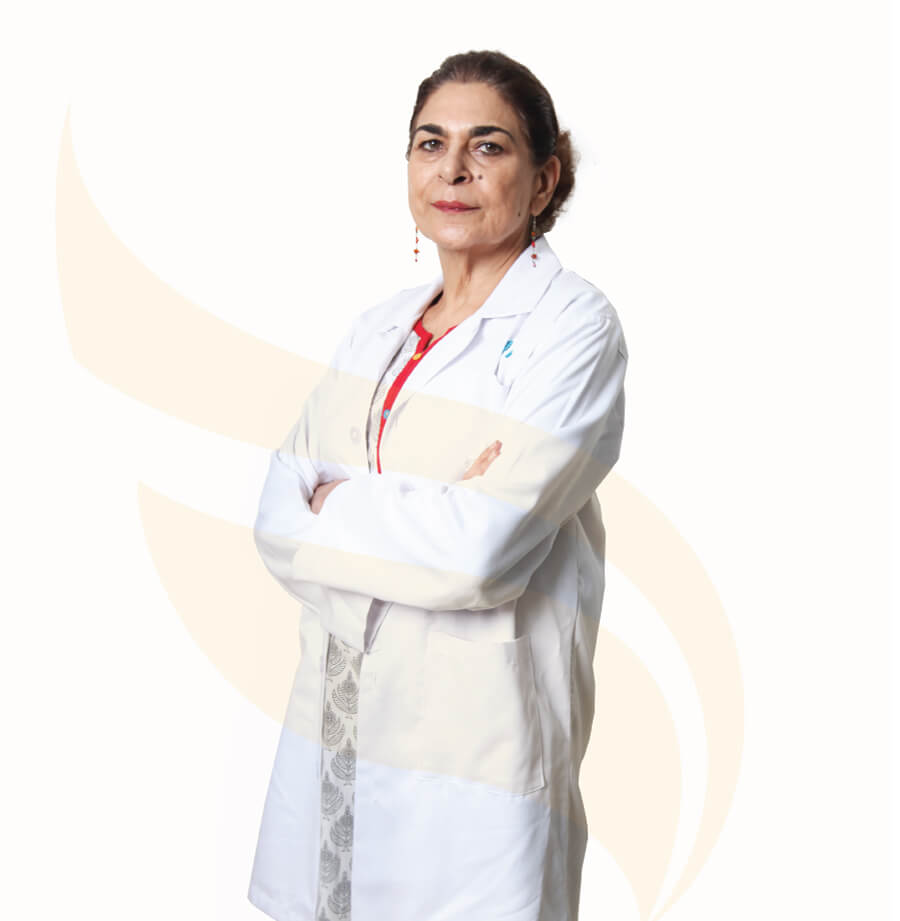Could not find what you are looking for?
- Treatments & Procedures
- Pediatric Thoracic Surgery- Types, Procedure, Cost In India, Risks, Recovery and Benefits
Pediatric Thoracic Surgery- Types, Procedure, Cost in India, Risks, Recovery and benefits
Best Hospital for Pediatric Thoracic Surgery in India
What is Pediatric Thoracic Surgery?
Pediatric Thoracic Surgery is a specialized field of medicine that focuses on surgical procedures involving the chest area in children. This branch of surgery addresses a variety of conditions affecting the lungs, heart, esophagus, and other structures within the thoracic cavity. The primary goal of Pediatric Thoracic Surgery is to treat congenital and acquired conditions that can impact a child's respiratory and cardiovascular health, ensuring they can lead healthy, active lives.
The procedures performed in Pediatric Thoracic Surgery can range from minimally invasive techniques to more complex open surgeries. These interventions are designed to correct anatomical abnormalities, remove tumors, repair injuries, or alleviate symptoms caused by various thoracic conditions. Pediatric thoracic surgeons are highly trained professionals who understand the unique anatomical and physiological differences in children compared to adults, allowing them to provide tailored care for their young patients.
Common conditions treated through Pediatric Thoracic Surgery include congenital heart defects, lung malformations, esophageal atresia, and mediastinal tumors. Each of these conditions can significantly affect a child's health and development, making timely surgical intervention crucial.
Why is Pediatric Thoracic Surgery Done?
Pediatric Thoracic Surgery is typically recommended when a child exhibits symptoms or conditions that cannot be effectively managed through non-surgical means. The decision to proceed with surgery is often based on a combination of clinical findings, diagnostic tests, and the overall health of the child.
Symptoms that may lead to the recommendation of Pediatric Thoracic Surgery can vary widely depending on the underlying condition. For instance, children with congenital heart defects may experience difficulty breathing, poor growth, or cyanosis (a bluish tint to the skin). Those with lung malformations might present with recurrent respiratory infections, wheezing, or chronic cough. In cases of esophageal atresia, symptoms can include difficulty swallowing, excessive drooling, and aspiration pneumonia.
Pediatric Thoracic Surgery is often considered when:
- Non-surgical treatments have failed: If medications, physical therapy, or other non-invasive interventions do not alleviate symptoms or improve the child's condition, surgery may be necessary.
- The condition is life-threatening: Some thoracic conditions can pose immediate risks to a child's life, necessitating prompt surgical intervention.
- The condition is progressive: If a child's condition is expected to worsen over time, surgery may be recommended to prevent further complications.
- Quality of life is significantly impacted: When a child's daily activities, growth, or development are hindered by a thoracic condition, surgery may be the best option to restore normal function.
Indications for Pediatric Thoracic Surgery
The decision to proceed with Pediatric Thoracic Surgery is based on specific clinical indications that suggest a child would benefit from surgical intervention. These indications are typically determined through a combination of physical examinations, imaging studies, and other diagnostic tests.
Some common indications for Pediatric Thoracic Surgery include:
- Congenital Heart Defects: Conditions such as atrial septal defects, ventricular septal defects, and tetralogy of Fallot may require surgical correction to ensure proper blood flow and oxygenation.
- Lung Malformations: Conditions like congenital lobar emphysema or pulmonary sequestration can lead to respiratory distress and may necessitate surgical resection of affected lung tissue.
- Esophageal Atresia: This congenital condition, where the esophagus does not connect properly to the stomach, often requires surgical repair to allow for normal feeding and swallowing.
- Mediastinal Tumors: Tumors located in the mediastinum, the area between the lungs, may require surgical removal if they are causing symptoms such as difficulty breathing or chest pain.
- Trauma: Injuries to the chest, such as those resulting from accidents or falls, may require surgical intervention to repair damaged structures or control bleeding.
- Infectious Conditions: Severe infections, such as empyema (accumulation of pus in the pleural cavity), may necessitate surgical drainage to prevent further complications.
In each of these cases, the pediatric thoracic surgeon will carefully evaluate the child's overall health, the severity of the condition, and the potential risks and benefits of surgery before making a recommendation. The goal is always to provide the best possible outcome for the child, ensuring they can thrive and grow after the procedure.
Types of Pediatric Thoracic Surgery
Pediatric Thoracic Surgery encompasses a variety of surgical techniques tailored to address specific conditions affecting the thoracic cavity in children. While the field is broad, some of the most recognized types of procedures include:
- Thoracotomy: This is a traditional surgical approach that involves making an incision in the chest wall to access the thoracic cavity. It is often used for more complex cases, such as the repair of congenital heart defects or the removal of large tumors.
- Video-Assisted Thoracoscopic Surgery (VATS): A minimally invasive technique that utilizes small incisions and a camera to guide the surgeon. VATS is commonly used for procedures such as lung resections or biopsies, offering benefits like reduced pain and quicker recovery times.
- Cardiac Surgery: This includes a range of procedures aimed at correcting congenital heart defects. Techniques may vary from simple repairs to more complex surgeries, such as the Fontan procedure, which is used for children with single ventricle heart defects. While often performed by cardiac surgeons, these procedures occur within the thoracic cavity.
- Esophageal Surgery: Procedures such as esophageal atresia repair or fundoplication (to treat gastroesophageal reflux) fall under this category. These surgeries aim to restore normal function and alleviate symptoms related to esophageal conditions.
- Lung Surgery: This may involve the resection of lung tissue affected by malformations or tumors. Techniques can include lobectomy (removal of a lobe of the lung) or wedge resection (removal of a small, wedge-shaped portion of the lung).
Each type of Pediatric Thoracic Surgery is designed to address specific conditions and is performed by skilled surgeons who specialize in pediatric care. The choice of procedure will depend on the individual child's diagnosis, overall health, and the specific goals of treatment.
In conclusion, Pediatric Thoracic Surgery plays a vital role in managing various thoracic conditions in children. By understanding the purpose, indications, and types of procedures involved, parents and caregivers can be better prepared for the journey ahead, ensuring their child receives the best possible care.
Contraindications for Pediatric Thoracic Surgery
Pediatric thoracic surgery, while often necessary for treating various conditions affecting the chest, is not suitable for every child. Several contraindications may make a patient unsuitable for this type of surgery. Understanding these factors is crucial for parents and caregivers to make informed decisions regarding their child's health.
- Severe Comorbidities: Children with significant underlying health issues, such as severe heart disease, lung disease, or other systemic conditions, may not be ideal candidates for thoracic surgery. These comorbidities can increase the risk of complications during and after the procedure.
- Infection: If a child has an active infection, particularly in the respiratory system or any area near the surgical site, surgery may be postponed. Infections can complicate recovery and increase the risk of postoperative complications.
- Poor Nutritional Status: Children who are malnourished or have significant weight loss may not tolerate surgery well. Adequate nutrition is essential for healing and recovery, and malnourished patients may face higher risks of complications.
- Uncontrolled Chronic Conditions: Conditions such as asthma or diabetes that are not well-managed can pose risks during surgery. It is essential for these conditions to be under control before proceeding with any surgical intervention.
- Anatomical Considerations: In some cases, the specific anatomy of a child's thoracic cavity may make surgery more complex or risky. For example, certain congenital anomalies may complicate the surgical approach.
- Parental Concerns: Sometimes, the emotional and psychological readiness of both the child and the parents can influence the decision. If parents are not comfortable with the procedure or have significant reservations, it may be worth discussing alternative options with the healthcare team.
- Age and Size: Very young children or those who are significantly underweight may not be suitable candidates for certain types of thoracic surgery due to the increased risks associated with anesthesia and surgical intervention.
- Previous Surgical History: A history of complications from previous surgeries, particularly in the thoracic area, may also be a contraindication. This history can indicate a higher risk for similar issues during subsequent procedures.
Understanding these contraindications helps ensure that pediatric thoracic surgery is performed only when the benefits outweigh the risks, leading to better outcomes for young patients.
How to Prepare for Pediatric Thoracic Surgery
Preparing for pediatric thoracic surgery involves several important steps to ensure the child is ready for the procedure. Parents and caregivers play a crucial role in this preparation process.
- Pre-Procedure Consultation: Before the surgery, a thorough consultation with the pediatric surgeon is essential. This meeting will cover the details of the procedure, expected outcomes, and any potential risks. Parents should feel free to ask questions and express any concerns.
- Medical History Review: The healthcare team will review the child’s medical history, including any previous surgeries, allergies, and current medications. It is vital to provide accurate information to avoid complications.
- Physical Examination: A complete physical examination will be conducted to assess the child’s overall health. This may include checking vital signs, lung function, and heart health.
- Preoperative Tests: Several tests may be required before surgery, including:
- Blood Tests: To check for anemia, infection, and overall health.
- Imaging Studies: X-rays, CT scans, or MRIs may be performed to provide detailed images of the thoracic cavity and any abnormalities.
- Pulmonary Function Tests: These tests assess lung capacity and function, which are crucial for recovery.
- Fasting Instructions: Parents will receive specific instructions regarding fasting before surgery. Typically, children are advised not to eat or drink anything for a certain period before the procedure to reduce the risk of aspiration during anesthesia.
- Medication Management: Parents should discuss all medications the child is taking with the healthcare team. Some medications may need to be adjusted or temporarily stopped before surgery, especially blood thinners or certain supplements.
- Emotional Preparation: Preparing the child emotionally is just as important as physical preparation. Parents can help by explaining the procedure in simple terms, reassuring the child, and discussing what to expect before, during, and after surgery.
- Postoperative Care Planning: Parents should also prepare for the recovery phase. This includes arranging for help at home, understanding pain management strategies, and knowing what signs to watch for that may indicate complications.
- Transportation Arrangements: Since children will be under anesthesia, they will not be able to go home alone. Parents should arrange for transportation and ensure that someone is available to care for the child after the procedure.
By following these preparation steps, parents can help ensure that their child is ready for pediatric thoracic surgery, leading to a smoother experience and better outcomes.
Pediatric Thoracic Surgery: Step-by-Step Procedure
Understanding the step-by-step process of pediatric thoracic surgery can help alleviate anxiety for both parents and children. Here’s what typically happens before, during, and after the procedure.
Before the Procedure
- Arrival at the Hospital: On the day of surgery, families will arrive at the hospital, where they will check in and complete any necessary paperwork.
- Preoperative Area: The child will be taken to a preoperative area where they will change into a hospital gown. Nurses will monitor vital signs and start an intravenous (IV) line for medications and fluids.
- Meeting the Anesthesiologist: The anesthesiologist will meet with the family to discuss the anesthesia plan. They will explain how anesthesia works and answer any questions.
- Final Preparations: The surgical team will perform a final check to ensure everything is in order. This includes confirming the procedure, the surgical site, and any special instructions.
During the Procedure
- Anesthesia Administration: Once in the operating room, the child will receive anesthesia through the IV or a mask. This will ensure they are asleep and pain-free during the surgery.
- Surgical Approach: The surgeon will make an incision in the chest, which may vary depending on the specific procedure being performed. Common procedures include repairing congenital defects, removing tumors, or addressing lung issues.
- Surgical Intervention: The surgeon will carefully perform the necessary repairs or interventions. This may involve working on the lungs, heart, or other structures within the thoracic cavity.
- Monitoring: Throughout the surgery, the child’s vital signs will be closely monitored by the surgical team to ensure stability.
After the Procedure
- Recovery Room: Once the surgery is complete, the child will be taken to the recovery room. Here, they will gradually wake up from anesthesia. Nurses will monitor their vital signs and comfort them as they regain consciousness.
- Pain Management: Pain relief will be provided as needed. This may include medications administered through the IV or orally, depending on the child’s condition.
- Observation: The child will be observed for a few hours to ensure there are no immediate complications. Parents will be allowed to be with their child as they wake up.
- Hospital Stay: Depending on the complexity of the surgery, the child may need to stay in the hospital for a few days for further monitoring and recovery. The healthcare team will provide guidance on postoperative care and any necessary follow-up appointments.
By understanding the step-by-step process of pediatric thoracic surgery, families can feel more prepared and informed, making the experience less daunting.
Risks and Complications of Pediatric Thoracic Surgery
Like any surgical procedure, pediatric thoracic surgery carries certain risks and potential complications. While many children undergo these surgeries successfully, it is essential for parents to be aware of both common and rare risks.
Common Risks
- Infection: One of the most common risks associated with any surgery is the possibility of infection at the surgical site. Healthcare teams take precautions to minimize this risk, but it can still occur.
- Bleeding: Some bleeding is expected during surgery, but excessive bleeding may require additional interventions. Surgeons are trained to manage bleeding effectively during the procedure.
- Anesthesia Complications: While rare, complications related to anesthesia can occur. These may include allergic reactions or respiratory issues. Anesthesiologists are skilled in managing these risks.
- Pain and Discomfort: Postoperative pain is common, and children may experience discomfort as they recover. Pain management strategies will be implemented to help alleviate this.
- Respiratory Issues: After thoracic surgery, some children may experience temporary respiratory difficulties. This is often managed with supplemental oxygen and close monitoring.
Rare Risks
- Organ Injury: There is a small risk of injury to surrounding organs during surgery, such as the heart, lungs, or major blood vessels. Surgeons take great care to avoid this, but it remains a possibility.
- Long-term Complications: In some cases, children may experience long-term complications related to their surgery, such as scarring or changes in lung function. Regular follow-up appointments can help monitor these issues.
- Thromboembolic Events: Rarely, children may develop blood clots after surgery, which can lead to serious complications. Preventative measures, such as early mobilization and medications, are often employed.
- Need for Additional Surgery: In some cases, the initial surgery may not fully resolve the issue, leading to the need for further surgical intervention. This is uncommon but can occur depending on the condition being treated.
- Psychological Impact: The experience of undergoing surgery can have psychological effects on children, including anxiety or fear related to medical procedures. Support from parents and healthcare providers is essential in addressing these concerns.
While the risks associated with pediatric thoracic surgery can be concerning, it is important to remember that the benefits often outweigh these risks. Surgeons and healthcare teams are dedicated to ensuring the safety and well-being of their young patients, and thorough preoperative assessments help minimize complications. By being informed about the potential risks and complications, parents can better prepare for their child's surgery and recovery.
Recovery After Pediatric Thoracic Surgery
Recovery from pediatric thoracic surgery is a crucial phase that requires careful attention to ensure the best outcomes for your child. The expected recovery timeline can vary depending on the specific procedure performed, the child's overall health, and any underlying conditions. Generally, the initial recovery period in the hospital lasts from a few days to a week. During this time, healthcare providers will monitor your child closely for any complications and manage pain effectively.
Once discharged, the recovery at home typically spans several weeks. Parents should expect their child to gradually regain strength and return to normal activities. Here are some aftercare tips to facilitate a smooth recovery:
- Pain Management: Ensure that your child takes prescribed pain medications as directed. Pain management is essential for comfort and can help your child engage in necessary activities like deep breathing exercises.
- Wound Care: Keep the surgical site clean and dry. Follow your surgeon's instructions regarding bathing and dressing changes. Watch for signs of infection, such as increased redness, swelling, or discharge.
- Activity Restrictions: Limit your child's physical activities for at least 4 to 6 weeks post-surgery. Avoid strenuous activities, heavy lifting, or contact sports until cleared by the surgeon.
- Dietary Considerations: A balanced diet rich in nutrients can aid recovery. Encourage your child to eat fruits, vegetables, lean proteins, and whole grains. Hydration is also vital, so ensure they drink plenty of fluids.
- Follow-Up Appointments: Attend all scheduled follow-up visits with the surgeon. These appointments are essential for monitoring healing and addressing any concerns.
- Emotional Support: Surgery can be a stressful experience for children. Provide emotional support and reassurance, and consider involving a child psychologist if your child shows signs of anxiety or depression.
Most children can resume normal activities, including school, within 4 to 6 weeks, but this can vary. Always consult with your child's healthcare provider for personalized advice.
Benefits of Pediatric Thoracic Surgery
Pediatric thoracic surgery offers numerous benefits that significantly improve a child's health and quality of life. Here are some key health improvements associated with this type of surgery:
- Improved Respiratory Function: Many conditions treated with pediatric thoracic surgery, such as congenital lung malformations or airway obstructions, can lead to significant improvements in breathing. Children often experience fewer respiratory infections and better overall lung function post-surgery.
- Enhanced Quality of Life: Children who undergo thoracic surgery for conditions like pectus excavatum (sunken chest) often report improved self-esteem and body image. This can lead to better social interactions and a more active lifestyle.
- Reduced Symptoms: Surgical intervention can alleviate symptoms such as chest pain, difficulty breathing, or recurrent infections. This relief can lead to a more active and fulfilling life for the child.
- Long-Term Health Outcomes: Early surgical intervention can prevent complications later in life. For instance, correcting congenital anomalies can reduce the risk of chronic lung disease or other serious health issues.
- Minimally Invasive Options: Advances in surgical techniques, such as video-assisted thoracoscopic surgery (VATS), allow for less invasive procedures. This results in smaller incisions, reduced pain, and quicker recovery times.
Overall, pediatric thoracic surgery can be life-changing, providing children with the opportunity to lead healthier, more active lives.
Pediatric Thoracic Surgery vs. Alternative Procedures
While pediatric thoracic surgery is often the best option for treating various thoracic conditions, there may be alternative procedures worth considering. For instance, some conditions may be managed with non-surgical interventions, such as physical therapy or medication. However, these alternatives may not provide the same long-term benefits as surgical options.
| Procedure | Pediatric Thoracic Surgery | Non-Surgical Alternatives |
|---|---|---|
| Invasiveness | Invasive | Non-invasive |
| Recovery Time | 4-6 weeks | Varies, often shorter |
| Effectiveness | High | Variable, may not resolve the issue |
| Long-Term Outcomes | Improved health and quality of life | May require ongoing management |
| Risks | Surgical risks (infection, bleeding) | Minimal risks |
Ultimately, the choice between pediatric thoracic surgery and alternative procedures should be made in consultation with a healthcare provider, considering the specific condition and the child's overall health.
Cost of Pediatric Thoracic Surgery in India
The cost of pediatric thoracic surgery in India typically ranges from ₹1,50,000 to ₹4,00,000. For an exact estimate, contact us today. Price can vary based on several key factors:
- Hospital: Different hospitals have varying pricing structures. Renowned institutions like Apollo Hospitals may offer comprehensive care and advanced facilities, which can influence the overall cost.
- Location: The city and region where the Pediatric Thoracic Surgery is performed can affect costs due to differences in living expenses and healthcare pricing.
- Room Type: The choice of accommodation (general ward, semi-private, private, etc.) can significantly impact the total cost.
- Complications: Any complications during or after the procedure can lead to additional expenses.
At Apollo Hospitals, we prioritize transparent communication and personalized care plans. Apollo Hospitals is the best hospital for Pediatric Thoracic Surgery in India because of our trusted expertise, advanced infrastructure, and consistent focus on patient outcomes.
We encourage prospective patients seeking a Pediatric Thoracic Surgery in India to contact us directly for detailed information about the procedure cost and assistance with financial planning.
With Apollo Hospitals, you get access to:
- Trusted medical expertise
- Comprehensive aftercare services
- Excellent value and quality care
This makes Apollo Hospitals a preferred choice for Pediatric Thoracic Surgery in India.
FAQs About Pediatric Thoracic Surgery
What should my child eat before surgery?
Before surgery, your child should have a light meal the night before, avoiding heavy or greasy foods. Follow your surgeon's specific instructions regarding fasting, as they may require your child to refrain from eating or drinking for a certain period before the procedure.
Can my child take medications before surgery?
It's essential to inform your child's surgeon about all medications they are taking. Some medications may need to be paused before surgery, especially blood thinners. Always follow the surgeon's advice regarding medication management.
What should I expect on the day of surgery?
On the day of surgery, your child will be taken to the pre-operative area, where they will change into a hospital gown. An anesthesiologist will discuss anesthesia options, and you will have the opportunity to ask any last-minute questions before the procedure begins.
How long will my child be in the hospital?
The hospital stay after pediatric thoracic surgery typically lasts from a few days to a week, depending on the procedure and your child's recovery progress. The healthcare team will monitor your child closely during this time.
What are the signs of infection after surgery?
Watch for increased redness, swelling, or discharge at the surgical site, as well as fever or worsening pain. If you notice any of these symptoms, contact your child's healthcare provider immediately.
When can my child return to school?
Most children can return to school within 4 to 6 weeks after surgery, but this can vary based on the child's recovery. Consult with your child's surgeon for personalized advice on when it's safe to resume school activities.
Are there any restrictions on physical activity after surgery?
Yes, your child should avoid strenuous activities, heavy lifting, and contact sports for at least 4 to 6 weeks post-surgery. Gradually reintroduce activities as advised by the healthcare provider.
How can I help my child manage pain after surgery?
Administer prescribed pain medications as directed and encourage your child to engage in deep breathing exercises. Comfort measures, such as a warm compress or distraction techniques, can also help alleviate discomfort.
What if my child is anxious about the surgery?
It's normal for children to feel anxious about surgery. Provide reassurance, explain the process in simple terms, and consider involving a child psychologist or counselor if anxiety persists.
Can my child eat normally after surgery?
After surgery, your child may need to start with a clear liquid diet and gradually progress to solid foods as tolerated. Follow your surgeon's dietary recommendations for a smooth recovery.
What should I do if my child experiences nausea after surgery?
Nausea can be a side effect of anesthesia. If your child experiences nausea, inform the healthcare team, as they can provide medications to help alleviate this symptom.
How can I support my child emotionally during recovery?
Offer emotional support by being present, listening to their concerns, and encouraging open communication. Engaging in fun activities together can also help distract them from discomfort.
What follow-up care is needed after surgery?
Follow-up appointments are crucial for monitoring your child's recovery. Your surgeon will assess the surgical site, check for any complications, and provide guidance on resuming normal activities.
Is it normal for my child to feel tired after surgery?
Yes, fatigue is common after surgery as the body heals. Encourage your child to rest and gradually increase their activity level as they feel more energetic.
What if my child has difficulty breathing after surgery?
If your child experiences difficulty breathing, contact their healthcare provider immediately. This could be a sign of a complication that needs prompt attention.
Can my child participate in sports after recovery?
Once cleared by the surgeon, your child can gradually return to sports. Ensure they follow any specific guidelines provided by the healthcare team regarding safe participation.
What are the long-term effects of pediatric thoracic surgery?
Many children experience significant improvements in health and quality of life after surgery. Long-term effects can vary based on the specific condition treated, but most children lead active, healthy lives post-surgery.
How can I prepare my child for the hospital stay?
Prepare your child by discussing what to expect during their hospital stay. Bring comfort items, such as a favorite toy or blanket, and encourage them to ask questions about the process.
What if my child has a cold or illness before surgery?
If your child is sick before surgery, contact the healthcare provider. They may need to reschedule the procedure to ensure your child's safety during anesthesia.
How can I help my child with breathing exercises after surgery?
Encourage your child to take deep breaths and use an incentive spirometer if prescribed. Make it a fun activity by counting breaths together or using a bubble-blowing game to promote lung expansion.
Conclusion
Pediatric thoracic surgery is a vital procedure that can significantly enhance a child's health and quality of life. With proper care and support during the recovery process, children can look forward to a brighter, healthier future. If you have any concerns or questions about pediatric thoracic surgery, it is essential to speak with a medical professional who can provide personalized guidance and support.












